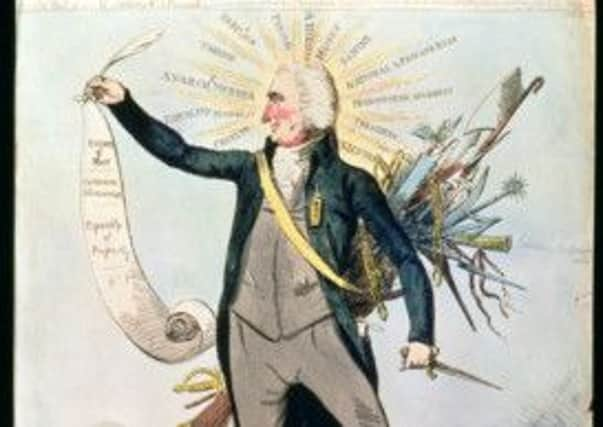Book review: Writing On The Wall by Tom Standage


Writing On The Wall by Tom Standage
Bloomsbury, 278pp, £14.99
Tom Standage is a very ingenious, engaging and wide-ranging non-fiction writer. His previous books have included an account of the notorious 18th century “Mechanical Turk” who could play chess, the story of the discovery of the planet Neptune, and an idiosyncratic history of the world through the lens of six drinks (beer, wine, spirits, tea, coffee and Cola). He is probably best known for The Victorian Internet, which examined the impact of the telegraph and how it changed the dissemination of news, with, as the title suggests, salient points of comparison to the technological revolution of today. Writing On The Wall returns to the connections between former writing and publishing paradigms and today’s digital world. Subtitled “Social Media: The First 2,000 Years”, there is much to admire in this, although I retain a degree of scepticism about Standage’s conclusions.
Where I absolutely agree with him is in highlighting the fact that the contemporary model of cultural production is relatively recent. It arose out of a number of factors: the invention of moveable type by Gutenberg in 1493, the Statute of Anne in 1710 which enshrined copyright, the first payment by means of advance in 1807 to Walter Scott for Marmion and the industrialisation of printing and broadcasting, from steam-printing in 1814 to the foundation of the BBC in 1922. Given that the first human attempts to leave a mark of significance are currently dated to the Blombos Cave inscriptions in South Africa, scratched some 77,000 years ago, we have not being doing things they way we do them now for terribly long. Standage covers a formidable array of topics in his attempt to show that Facebook, Twitter, YouTube and blogging are just the latest versions of earlier forms of communication: he ranges from graffiti in Pompeii to Elizabethan epigrams, from Luther’s theses to Paine’s Rights Of Man.
Advertisement
Hide AdTake this as an exemplar. Imagine an author, who does not expect payment for his work, who circulates his writing for free and actively solicits celebrity endorsements to expand readership, and who occasionally becomes aggravated by the pirating of distorted or imperfect copies. This may sound like a blogger today, but is actually Standage’s account of the Roman orator Cicero. There are certainly parallels. There are also divergences which should be stressed as much as the resemblances. Cicero was wealthy, had slaves to copy his work, and lived in a society with a literacy rate of between 5 and 30 per cent depending on how one defines literacy.
Standage’s typical rhetorical technique is to propose a simile of sorts and then proceed as if partial resemblance were the same as absolute identity. So, wittily, he refers to the epigrams of Sir John Harington as “the tweets of @SaucyGodson”, and writes “today some people manage to exploit their prowess at blogging or tweeting to achieve fame, win a plum job, or land a book deal. Similarly, the ability to write poems, coin epigrams, and respond to others with witty put-downs provided a means for young men to demonstrate the breadth of their knowledge and the quickness of their wit, and by extension their suitability for appointment to official posts”. I wonder how many Elizabethan and Jacobean epigrams Standage has actually read, and whether he considers, say, Jonson’s XLV “On My First Son”, or the works by Richard Crashaw or Abraham Cowley, to be similar in content or even length to “If candy became art. Cannot art become candy. I eat art like candy” (that’s Lady Gaga, by the way). We also get the claim that Luther’s work, and Thomas Paine’s, “went viral”. I doubt Luther or even Paine were sitting at home doing the equivalent of counting the number of hits their work got; they had rather weightier matters on their minds. The success of their work is testament to not just their genius, but to their acuity in analysing political problems in their own day.
In the chapters covering the rise of mass media, Standage performs a rather inelegant sleight of hand. In one section Standage moves from Lord Reith to Joseph Goebbels over a paragraph break, as if the two had common purpose as well as mutual access to new technologies, as if every centralised broadcast system were intrinsically authoritarian. At their best, broadcasters such as the BBC can produce works that are more than the sum of the individual contributions. I still am in awe of the intellectual and aesthetic bravery that led the BBC to film all of Shakespeare’s plays, or their Theatre Night versions of Ibsen’s The Master Builder with Leo McKern and Miranda Richardson, or Moliere’s The Miser with Nigel Hawthorne. “Sharing”, “Liking” and “+1-ing” are not the same as creative co-operation and collaboration. The great irony of Standage’s book is that social media is not that social when it comes to cultural production. Crowd-sourcing means an inevitable relinquishing towards the lowest common denominator. Putting a Hitler moustache on your cat and adding a speech balloon is not the same as staging Lohengrin.
Ah, the reply comes: you’re an elitist. I am. I believe, as Sandy Stoddard said, in elitism for all. The present state is not perfect but the alternatives – seeking patronage? Changing your vision because 70 per cent of your online respondents want King Lear dressed as Doctor Doom? – are far more corrupting.